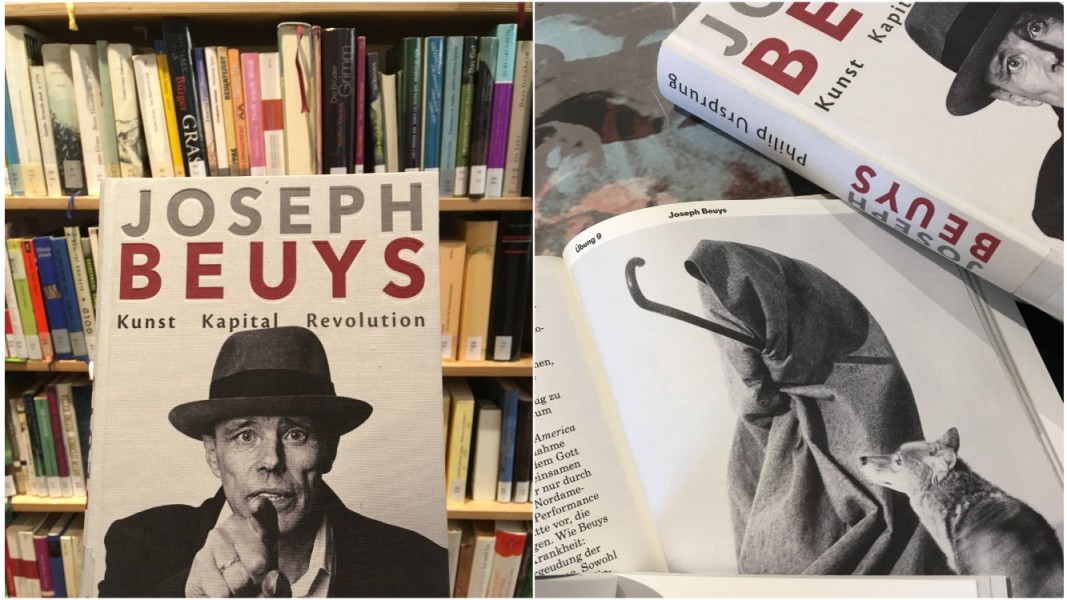 7
7
Joseph Beuys is a highly controversial, though towering figure in contemporary art. With these words Vera Mlechevska, curator of the latest exhibition at the Kvadrat 500 National Gallery – “Sparks of imagination: On the frequencies of Beuys”,begins the interview with Radio Bulgaria. With this exposition Bulgaria joins the centennial birth celebrations (marked in 2021) of the German sculptor, artist, aesthete and lecturer. The exposition is also an artistic attempt to answer the question: Who is Joseph Beuys and what does he have to do with Bulgarian art?
“Joseph Beuys is an extremely versatile artist, very complex as a human being, evolving and changing throughout his entire professional career. He took part in World War 2, as part of Germany’s air force, and that impacted his work enormously. He suffered major trauma, as a German, and also as a human being as a result of his participation in the war. And throughout his entire life he would try to heal this trauma and change society through art in some way, so that the common man would lead a better life. He endeavoured to awaken creativity in every person, whether an artist or not,” Vera Mlechevska says. In “Sparks of imagination” viewers are not going to see works by Beuys, they will discover his ideas in works by contemporary Bulgarian artists and artistic groups he inspired, or with quests similar to his, Vera Mlechevska says.

“I received an invitation from Goethe Institute, Bulgaria, to make some kind of connection between the Bulgarian stage and Bulgarian artists, and Joseph Beuys. It proved a difficult job, because as renowned an artist as he may be globally, he actually became better known in Bulgaria after his death in 1986. And, of course, the reason is that until that time, there was no way the kind of art that Beuys created could be very popular, here in Bulgaria, because of the restrictions of totalitarian times, and the outlook of the art institutions. Things like performances and installations were frowned upon. So that Beuys was known to a handful of artists in the country who were influenced by him, directly or indirectly, though there do exist many more whose creative quests were similar to his. The bond between all artists included in the exhibition is actually on the level of ideas, not of any direct influence. The exposition features archive documents from the late 1980s and early 1990s, provoked by environmental problems, by problems connected with the emancipation of people and artists. That is the period of transition in Bulgaria (from totalitarianism to democracy – editorial note), when there was a surge of public energy for change, something which underlies Joseph Beuys’ art. That is what I was looking for, that is why we called the exhibition “sparks of imagination”, because a spark can travel a long way, fall in a different place entirely from the place where it originated, but have the same result.”
Vera Mlechevska admits that what inspired her most about Joseph Beuys during her work on the exhibition were the constant changes he underwent.
“Beuys scattered his activities in all kinds of forms, and I have been trying to pick up his presence in everything and everywhere, including in the building of the National Gallery. The exhibition occupies all floors – from the basement to the roof, with myself and the artists endeavouring to establish a dialogue with the building itself, with the architecture and the permanent collection in it, a novel idea for the gallery,” the curator says.
Besides works of art and archive documents included in “Sparks of imagination: On the frequencies of Beuys”, there is a parallel accompanying programme featuring various screenings, meetings with artists and performances, in compliance with all existing pandemic restrictions. The exhibition is on until 21 April, 2022.
Photos: nationalgallery.bg, goethe.deAt a special ceremony at the Romanian Embassy in Sofia, Ambassador Brândușa Ioana Predescu presented Bulgarian conductor Nayden Todorov with the Order of Cultural Merit with the rank of Grand Officer. "We are here to honor today your Maestro whom I..
Spanish writer Ana Andreu Baquero is coming to Bulgaria to present her novel "The Princess of Buchenwald" , the Cervantes Institute, which is organising the event with the Hermes publishing house, announced. The presentation of the book is scheduled..
On February 12, in the cosy space of the Bulgaria Gallery in the heart of Rome, compatriots and Italians will gather to commemorate a Bulgarian healer who with perseverance and dedication managed to change the lives of thousands of..
At a special ceremony at the Romanian Embassy in Sofia, Ambassador Brândușa Ioana Predescu presented Bulgarian conductor Nayden Todorov with the Order of..

+359 2 9336 661
